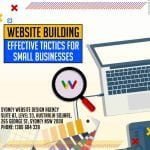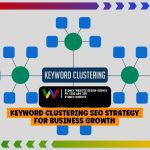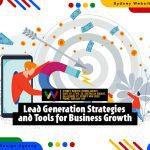Understanding Marketing Funnels: A Comprehensive Guide for Business Who Aims to Grow in 2024
If you’re a business owner who wants to stay ahead of the game in 2023 and beyond, understanding marketing funnels is essential. In this comprehensive guide, we’ll walk you through the basics of marketing funnels. We’ll show you how to create a funnel that will help you grow your business and increase your bottom line through working and effective marketing campaigns.
Introduction
Marketing funnels is a critical component of any business looking to grow and succeed in today’s competitive landscape. While most businesses understand the importance of marketing, many struggle to develop a cohesive and effective marketing strategy that delivers tangible results. This is where marketing funnels come in.
Marketing funnels are a vital tool for businesses of all sizes and industries. They help businesses attract potential customers, nurture leads, and ultimately convert them into loyal customers. However, understanding marketing funnels can be complex, and many businesses don’t know where to start.
In this comprehensive guide, we’ll delve into what marketing funnels are, the different stages of a marketing funnel, and how to create and optimise effective marketing funnels for your business. By the end of this guide, you’ll clearly understand how marketing funnels can help your business grow and succeed in 2023.
Table of Contents
- What are Marketing Funnels?
- The Stages of a Marketing Funnel
- Top of the Funnel (TOFU): Attracting Potential Customers
- Middle of the Funnel (MOFU): Nurturing Leads
- Bottom of the Funnel (BOFU): Converting Leads into Customers
- Creating Effective Marketing Funnels
- Tools and Techniques for Optimising Marketing Funnels
- Common Mistakes to Avoid in Marketing Funnels
- FAQs Marketing Funnels
- Continuous Improvement: Testing and Refining Your Marketing Funnels
What are Marketing Funnels?

Marketing funnels are a crucial concept for any business looking to grow and succeed in today’s digital age. At their core, marketing funnels are a visual representation and a lead management system. It is the different stages that potential customers go through before making a purchase or taking a desired action.
The funnel metaphor represents the fact that not all potential customers will become customers. Also, the number of potential customers narrows as they move through the stages of the funnel. Marketing funnel works to guide brand advocates in the sales process.
The Stages of a Marketing Funnel

The stages of a typical marketing funnel include:
Awareness
This awareness stage is the first stage of the funnel, where potential customers become aware of your brand, product, or service. This stage is all about generating interest and capturing the attention of potential customers.
Interest
In this stage, potential customers start to show interest in your brand, product, or service. They might explore your website, follow you on social media, or sign up for your newsletter.
Consideration
At this stage, potential customers are evaluating your brand, product, or service. They might compare your offerings to your competitors or read reviews from other customers.
Intent
Once a potential customer reaches this stage, they intend to make a purchase or take a desired action. This is the consideration stage where you want to focus on converting potential customers into paying customers.
Purchase
In this stage of the customer journey, the potential customer makes a purchase or takes a desired action. This is the ultimate goal of the marketing funnel.
Loyalty
After a customer makes a purchase or takes a desired action, the goal of a marketing campaign is to turn them into a repeat customer and/or advocate for your brand. This is the final stage of the marketing funnel.
Understanding these different stages of the marketing funnel is critical. It is for creating targeted marketing campaigns that speak to customers at each stage of the funnel. It guides them towards making a purchase or taking a desired action.
Top of the Funnel (TOFU): Attracting Potential Customers

The top of the funnel (TOFU) is the first stage of the marketing funnel, where potential customers become aware of your brand, product, or service. This stage is all about attracting potential customers and generating interest in your offerings.
There are several strategies businesses can use to attract potential customers at the top of the funnel, including:
Create high-quality content, such as blog posts, videos, and social media posts. It provides value to potential customers and positions your brand as an authority in your industry.
Search Engine Optimisation (SEO)
Optimise your website and content to rank higher in search engine results pages (SERPs). This makes it easier for potential customers to find you when they search for relevant keywords.
Use social media platforms to engage with potential customers. Share content and build a community around your brand.
Pay-Per-Click (PPC) Advertising
Use paid advertising such as Google Ads or Facebook Ads. It is to these paid ads target potential customers with relevant ads and drive traffic to your website.
Influencer marketing
Partnering with influencers in your industry to promote your brand and products to their followers.
It’s important to remember that the goal at the top of the funnel is not necessarily to make a sale or convert a potential customer right away. Instead, the goal is to attract potential customers and generate interest in your brand or offerings. It is so that they move further down the funnel towards making a purchase or taking a desired action.
It’s critical to track metrics. Examples of such are website traffic, social media engagement, and email newsletter sign-ups. It is to measure the success of your top-of-the-funnel marketing efforts. By analysing these metrics, you can identify which strategies are most effective at attracting potential customers. You can then adjust your marketing efforts accordingly.
Overall, the top of the funnel is a critical stage in the marketing funnel. It sets the foundation for the rest of the funnel and determines how many potential customers you’ll have to work with further down the line. Businesses can increase their chances of success in the competitive landscape of 2023 and beyond. It is by using effective strategies to attract potential customers at the top of the funnel.
Middle of the Funnel (MOFU): Nurturing Leads

The middle of the funnel (MOFU) is the second stage of the marketing funnel. It is where potential customers who have shown interest in your brand, product, or service move further down the funnel. It is towards becoming a paying customer or taking a desired action. This stage is all about nurturing leads and providing them with the information and resources they need to make an informed decision.
Some effective strategies for nurturing leads at the middle of the funnel include:
Email Marketing
Send targeted email campaigns to leads. It provides them with helpful information. It can address their pain points and guide them towards making a purchase or taking a desired action.
Lead Magnets
Offer valuable resources. Examples of such are e-books, white papers, or webinars. You can exchange it for a lead’s contact information. This allows you to continue nurturing the relationship and guide them towards making a purchase.
Retargeting
Show targeted ads to leads who have visited your website or engaged with your brand in the past. Remind them of your offerings and encourage them to take action.
Personalisation
Use data and insights to personalise the messaging and content you send to leads. This makes them feel seen and understood and increases the likelihood that they’ll convert.
Remarketing
Reach out to leads who have shown interest but haven’t taken action. Provide additional information or incentives as many leads to encourage them to move further down the funnel.
It’s important to remember that the goal at the middle of the funnel is not necessarily to make a sale or convert a lead right away. Instead, the goal is to build trust and provide value to the lead. It is so that they are more likely to make a purchase or take a desired action further down the funnel.
It’s important to track metrics. Those such as email open and click-through rates, your lead generation, magnet downloads, and engagement with retargeting ads. It is to measure the success of your middle-of-the-funnel marketing efforts. By analysing these metrics, you can identify which strategies are most effective at nurturing leads. You can then adjust your marketing efforts accordingly.
Overall, the middle of the funnel is a critical stage in the marketing funnel. It’s where potential customers begin to consider your offerings seriously and decide whether to make a purchase. Businesses can increase their chances of success in the competitive landscape of 2023 and beyond. It is by using effective strategies to nurture leads at the middle of the funnel.
Bottom of the Funnel (BOFU): Converting Leads into Customers

The bottom of the funnel (BOFU) is the final stage of the marketing funnel. It is where leads who have been nurtured through the previous stages are ready to make a purchase or take a desired action. The goal at this stage is to convert leads into paying customers. It is by providing them with the information and incentives they need to make a decision.
Here are some effective strategies for converting leads into customers at the bottom of the funnel:
Clear Call-to-Actions
Make it easy for leads to take action. It is by providing clear and prominent calls-to-action (CTAs) on your website, landing page, pages, and marketing materials.
Discounts and Promotions
Offer discounts or promotions to incentivise leads to make a purchase. Be careful not to devalue your offerings or damage your brand image.
Social Proof
Use customer testimonials, reviews, and case studies to demonstrate the value of your offerings and build trust with leads.
Upselling and Cross-Selling
Offer additional products or services that complement or enhance the lead’s purchase. This increases the value of the sale sales qualified leads and can potentially turn them into a repeat customer.
Abandoned Cart Recovery
Follow up with leads who have abandoned their cart with reminder emails or retargeting ads. This can encourage them to complete their purchase.
It’s important to track metrics such as conversion rates, average order value, and customer retention. It is to measure the success of your bottom-of-the-funnel marketing efforts. By analysing these metrics, you can identify areas for improvement. You can then adjust your marketing strategies accordingly.
Ultimately, the goal at the bottom of the funnel is to convert leads into paying customers. It also establishes a long-term relationship with prospective customers with them. Businesses can grow their customer base and increase revenue in 2023 and beyond. It is by using effective strategies to convert leads at the bottom of the funnel.
Creating Effective Marketing Funnels

Creating an effective marketing funnel is critical for businesses that want to grow and succeed in 2023 and beyond. Here are some steps to help create an effective marketing funnel:
Define Your Target Audience
The first step in creating an effective marketing funnel is to define your target audience. Identify their pain points, goals, and behaviour, so you can tailor your marketing efforts to their specific needs and interests.
Develop Your Messaging
Your messaging should be consistent and tailored to each stage of the funnel. Your top-of-the-funnel messaging should be focused on attracting potential customers. Middle-of-the-funnel messaging should be focused on nurturing leads. Lastly, your bottom-of-the-funnel messaging should be focused on converting leads into paying customers.
Choose the Right Channels
Determine the channels that your target audience uses most and where they are most likely to engage with your brand. This could include social media, email marketing, paid advertising, or other channels.
Create Valuable Content
At each stage of the funnel, it’s important to provide value to your audience. Create content that addresses their pain points and offers solutions. Provide helpful resources such as e-books, webinars, and white papers.
Implement Lead Magnets
To capture leads at the top of the funnel, offer lead magnets. Those such as free guides, checklists, or templates in exchange for their contact information.
Nurture Leads
Use email marketing, retargeting, and other strategies to nurture leads through the middle of the funnel. Provide them with helpful information and build trust.
Optimise for Conversion
At the bottom of the funnel, focus on optimising for conversion. Optimise your landing pages and create clear and prominent calls-to-action. Furthermore, offer incentives such as discounts or free shipping.
Analyze and Refine
Continuously track and analyze your funnel metrics. Those such as conversion rates, bounce rates, and customer retention. Use this data to refine and improve your funnel over time.
By following these steps, businesses can create an effective digital marketing funnel. One that attracts potential customers, nurtures leads, and converts leads into paying customers. In 2023, it will be critical for businesses to have a strong digital presence and effective marketing strategies. An effective marketing funnel is a key component of this.
Tools and Techniques for Optimising Marketing Funnels

Optimising your marketing funnel is critical. It is for improving your conversion rates and driving business growth. Here are some tools and techniques for optimising your marketing funnel in 2023:
A/B Testing
A/B testing involves comparing two versions of a webpage or marketing asset to see which performs better. Businesses can identify which elements of their funnel are most effective. It is by testing different headlines, images, and calls-to-action.
Analytics Tools
Tools like Google Analytics allow businesses to track their funnel metrics. This includes bounce rates, conversion rates, and customer retention. This data can help identify areas where the funnel can be improved.
CRM Software
Customer Relationship Management (CRM) software can help businesses. It can manage and analyze all customer journeys, interactions, and data throughout the funnel. This can include tracking leads, segmenting customer data, and automating marketing tasks.
Retargeting
Retargeting involves targeting ads to people who have previously interacted with your brand. Those such as by visiting your website or signing up for your email list. This can be an effective way to re-engage potential customers who may have dropped out of your funnel.
Customisation and Unique Approach
Customisation involves tailoring your marketing efforts. It is based on specific interests and behaviours of individual customers. This can include personalised emails, product recommendations, and targeted ads.
Chatbots
Chatbots can be used to automate customer interactions and provide support throughout the funnel. It can improve customer satisfaction and conversion rates. It is by providing quick and helpful responses to customer questions.
Social Proof
Social proof involves using customer reviews, testimonials, and other social proof elements. It is to build trust and credibility with potential customers. Including social media posts as proof throughout the funnel can improve conversion rates and customer retention.
Businesses can optimise their marketing qualified leads for maximum effectiveness in 2023. It is by utilising these tools and techniques. Continuously testing and refining your funnel is key. It is to drive growth and stay competitive in the ever digital marketing marketplace.
Common Mistakes to Avoid in Marketing Funnels

There are several common mistakes that businesses should avoid to ensure the success of their funnel. Here are some of the most common mistakes to watch out for:
Not Defining Target Audience
Failing to define your target audience can result in an ineffective marketing funnel. Understanding who your potential customers are and what they’re looking for is essential. It is to create content that resonates with them and encourages them to move through the funnel.
Neglecting Top of the Funnel
Neglecting the top of the funnel can be a costly mistake. Businesses should focus on attracting potential customers to their brand. It is through targeted advertising, content marketing, and social media engagement.
Overcomplicating the Funnel
A complicated funnel can confuse potential customers and ultimately lead to drop-offs. Keep the funnel simple and intuitive to ensure that customers can easily navigate through it.
Ignoring Middle of the Funnel
Once potential customers have engaged with your brand, it’s important to continue nurturing them through the middle of the funnel. This can include targeted emails, personalised content, and special promotions.
Failing to Follow Up with Leads
Failing to follow up with leads can result in missed opportunities. Use marketing automation tools to keep track of leads and engage with them throughout the funnel.
Not Tracking Metrics
Without tracking metrics such as conversion rates and customer retention, it’s impossible to know whether your funnel is effective. Use analytics tools to monitor metrics and adjust the funnel as needed.
Ignoring Feedback
Customer feedback can provide valuable insights into how to improve the sales funnel. Don’t ignore feedback from customers, and use it to make necessary adjustments to the funnel.
By avoiding these common mistakes, businesses can create effective marketing tactics and strategies in generating prospective customers to genuine marketing efforts in the different marketing funnel stages. Ones that attract and convert potential customers. This ultimately leads to business growth and success in 2023.
Marketing Funnels Frequently Asked Questions
As businesses begin to implement marketing funnels as part of their growth strategy, they may have several questions about the process. Here are some frequently asked questions about marketing funnels:

What is a marketing funnel and why is it important?
How does the customer journey differ from the traditional marketing funnel?
What are the key stages in a marketing funnel?
How can content marketing support the marketing process?
What metrics should marketing teams track in a digital marketing funnel?
How can businesses prevent losing customers during the sales funnel process?
How do loyalty programs contribute to the marketing funnel?
What role does the sales team play in the marketing and sales funnel?
How can businesses use customer testimonials to enhance their marketing funnel?
Continuous Improvement: Testing and Refining Your Marketing Funnels
Continuous improvement is a critical aspect of creating effective marketing funnels. It involves testing and refining your funnel to ensure that it’s performing at its best. Here are some key strategies for continuously improving your marketing funnels:
A/B testing involves creating two versions of your marketing funnel and testing them with different groups of customers to see which version performs better. This can help you identify areas for improvement and make data-driven decisions about your marketing sales funnel.
Based on your testing, feedback, and data analysis, make iterative changes to your marketing funnel to improve its performance. Continuously refining your funnel over time will help you achieve better results and drive more revenue for your business.
Continuous improvement is an ongoing process. It’s important to dedicate time and resources to testing and refining your marketing funnel regularly. By following these strategies, businesses can create marketing funnels that are effective, efficient, and drive growth in 2023 and beyond.




















































